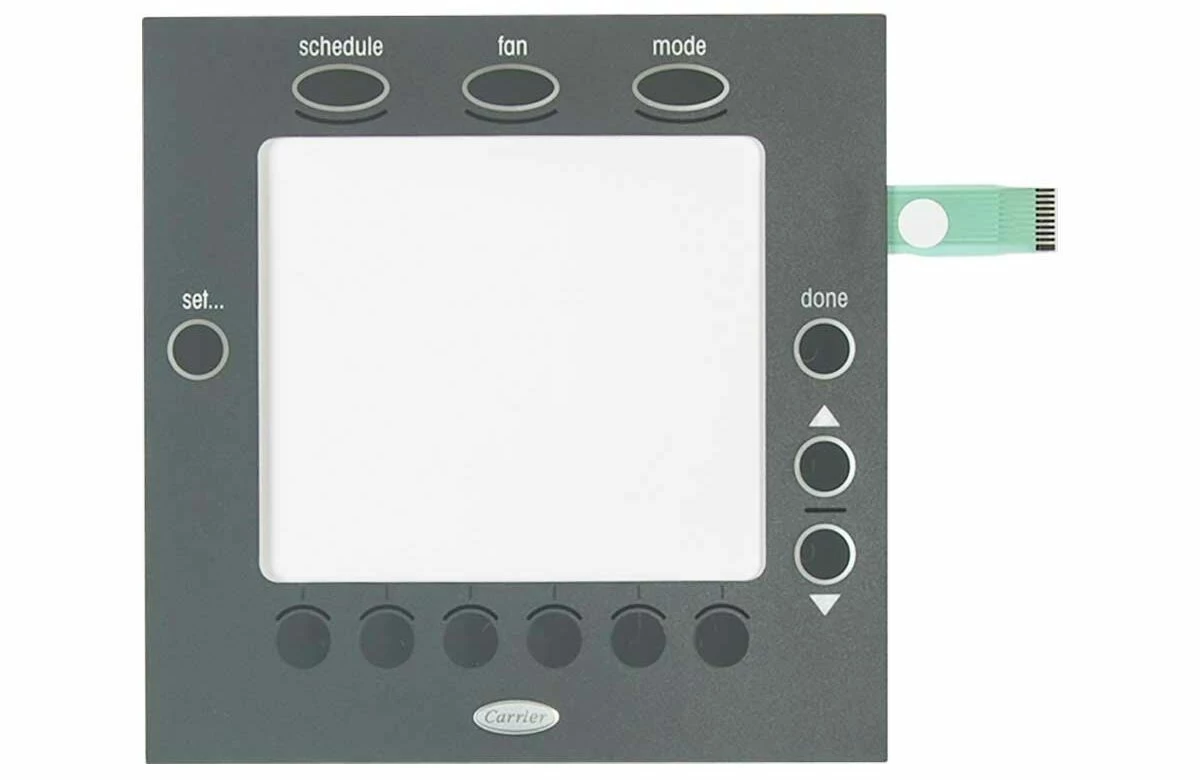Membrane Changes Explained: A Comprehensive Guide to Their Benefits
Membrane layer changes represent a sophisticated and versatile solution for developing interface across a range of sectors. Their multilayered style not only makes sure performance with straightforward pressure but additionally offers considerable advantages, such as sturdiness and modification. As markets increasingly seek efficient and trusted control interfaces, comprehending the certain advantages and applications of membrane layer changes comes to be crucial. The ins and outs of their layout and execution present distinct challenges that value closer exam. What aspects should be taken into consideration to fully leverage their capacity in contemporary applications?
What Are Membrane Layer Buttons?

When pressure is related to the membrane button, the layers make call, completing an electric circuit. This easy device permits for a variety of applications, from customer electronic devices to industrial equipment. Membrane switches are usually created to be water-proof and resistant to dust and pollutants, making them appropriate for environments where longevity is necessary.
Additionally, the flexibility of the products utilized in membrane changes facilitates ingenious designs that can adapt different shapes and measurements. This adaptability adds to their popularity in diverse fields, including clinical gadgets, automobile controls, and home appliances. On the whole, membrane switches stand for a critical element in modern-day interface innovation, bridging the space between customers and electronic systems.
Trick Benefits of Membrane Buttons
Among the myriad of user interface options readily available, membrane changes stick out for their distinct combination of advantages. One of the key benefits is their compact and lightweight design, which enables assimilation right into a variety of devices without adding considerable mass. This is especially helpful in applications where space is restricted.
Additionally, membrane layer switches offer longevity and resistance to environmental aspects. They are typically constructed with materials that can withstand moisture, dust, and numerous chemicals, making them suitable for rough conditions. This sturdiness contributes to a longer life expectancy compared to conventional mechanical switches.
Another significant benefit is the flexibility in modification. Membrane layer buttons can be printed with numerous graphics, shades, and structures, allowing for tailored layouts that meet certain branding or functional needs. This flexibility encompasses the variety of layers and circuit options, giving engineers with multiple arrangements.
In addition, the tactile feedback given by some membrane layer changes improves user experience, making them more intuitive to operate. The convenience of cleaning and upkeep additionally solidifies membrane layer switches as a sensible choice in both customer and industrial applications. Generally, these vital benefits make them a favored solution for many designers and makers
Applications in Various Industries
How do membrane buttons find their place across varied markets? Their convenience and capability make them indispensable components in industries ranging from healthcare to customer electronic devices. In clinical devices, membrane buttons are made use of for their convenience of cleaning and resistance to contamination, making sure health in settings where sterility is essential.
In the customer electronic devices market, these switches give streamlined, easy to use user interfaces that improve item aesthetic appeals while keeping sturdiness versus deterioration. Automotive applications gain from membrane switches also, where they are made use of in control panels and control panels, using reliable efficiency in tough problems.
Additionally, commercial equipment utilizes membrane switches for control board because of their robustness, ability to endure rough environments, and customizable designs that satisfy specific operational needs. The food market leverages membrane switches for their convenience of usage and resistance to spills, making sure functional efficiency in fast-paced setups.
Eventually, the versatility of membrane layer changes throughout these diverse applications underscores their essential function in contemporary innovation, improving individual interaction while satisfying industry-specific requirements. Their proceeded development guarantees further assimilation into emerging fields and innovative items.
Layout and Customization Alternatives
The style and customization alternatives offered for membrane buttons are vital for customizing interfaces to satisfy specific user demands and aesthetic preferences. These switches can be made in various shapes, dimensions, and layouts, allowing for smooth combination right into varied applications. The flexibility in design means that makers can produce one-of-a-kind user interfaces that enhance use and maintain brand identification.
Custom-made textures, colors, and graphics can be put on the surface of the membrane layer button, supplying a possibility for branding and customer involvement. In addition, backlighting options, such as LED illumination, can be integrated to enhance visibility in low-light conditions, hence boosting performance.
Useful elements can additionally be tailored, consisting of tactile comments and actuation force, which can be adapted to suit various individual interactions. The selection of products, such as polyester or polycarbonate, permits variations in durability and ecological resistance, dealing with the particular demands of various markets.
Inevitably, the substantial style and modification abilities of membrane switches allow firms to produce straightforward and aesthetically enticing interfaces, ensuring that their products fulfill both visual and functional needs effectively. Membrane Switches.
Factors To Consider for Execution
Carrying out membrane layer switches over requires mindful factor to consider of various elements to guarantee optimum functionality and user experience. Elements such as direct exposure to moisture, extreme temperature levels, and chemical navigate to this site substances can significantly impact the button's performance and durability.

An additional essential facet is the button's style and design. Making sure that the tactile feedback and actuation force line up with individual expectations boosts usability. Carrying out user testing can offer important insights right into the optimum style.
Furthermore, compatibility with electronic components need to be assessed. The button's wiring must align with the overall system design, guaranteeing dependable signal transmission and lessening disturbance.
Furthermore, production methods and costs must be reviewed. The option between custom styles and basic versions can influence both budget and lead time.
Last but not least, take into consideration upkeep and fixing. Membrane layer buttons may need details cleansing and care treatments to preserve their appearance and capability gradually. By dealing with these considerations, companies can carry out membrane layer switches that satisfy their operational demands you can try here while giving a favorable customer experience.

Conclusion
Finally, membrane changes stand for a sturdy and versatile control user interface appropriate for a variety of applications across numerous industries. Their small layout, resistance to environmental aspects, and personalized attributes enhance customer experience while meeting specific branding demands. As technology remains to progress, the importance of membrane buttons in contemporary tools remains substantial, offering both capability and visual appeal. Future developments will likely additionally broaden their applications and performance in numerous settings.
Membrane layer switches over represent a versatile and sophisticated remedy for producing user interfaces throughout a range of fields.Recognizing the fundamental components of contemporary electronic interfaces, membrane buttons are a type of customer interface device that consist of versatile, slim layers of material. Generally, membrane layer switches over represent an essential component in modern-day customer interface innovation, connecting the space in between users and digital systems.
Among the myriad of customer interface options available, membrane layer switches stand out for their unique mix of advantages.The style and personalization options readily available for membrane layer visit the site buttons are critical for customizing user interfaces to meet details customer needs and aesthetic preferences.
 Spencer Elden Then & Now!
Spencer Elden Then & Now! Josh Saviano Then & Now!
Josh Saviano Then & Now! Nancy McKeon Then & Now!
Nancy McKeon Then & Now! Lisa Whelchel Then & Now!
Lisa Whelchel Then & Now! Rossy de Palma Then & Now!
Rossy de Palma Then & Now!